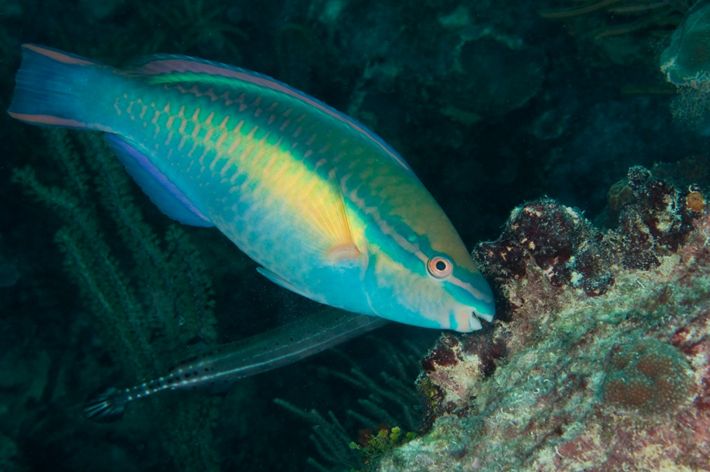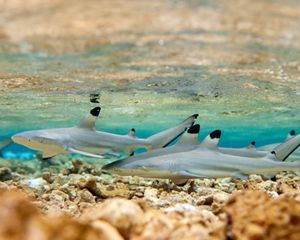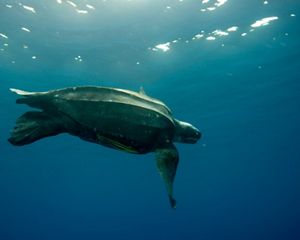
Parrotfish Conservation
This fish isn't just beautiful—parrotfish create the very sand on our beaches.
.jpg)
Parrotfish Fast Facts
Family: Scaridae
Conservation status: Can face localized extinction
Lifespan: Up to 7 years
Length: Up to 4 feet (1.2 meters)
Meet the Parrotfish
Parrotfish are colorful, tropical creatures that spend about 90% of their day eating algae off coral reefs. This almost-constant eating performs the essential task of cleaning the reefs which helps the corals stay healthy and thriving.
The parrotfishes’ digestive system, which includes more teeth inside their throats breaks down coral bits into the white sands that make South Pacific beaches famous. Known as bioerosion, this process helps control algae populations and create new surfaces for baby corals to attach to and grow. But just how much sand can a parrotfish produce? Surely it can’t be enough to really make whole beaches? Think again. Scientists estimate that a single Chlorurus gibbus parrotfish can poop out more than 2,000 pounds of sand each year!
Parrotfish live in reefs all around the world, but they all generally live about 5-7 years and grow to 1-4 feet in length. They typically feed during the day and sleep—by wrapping themselves in a safety cocoon made of mucus or by finding a hiding place in the coral—at night.
Protecting the Parrotfish
Coral reefs face a lot of threats, of course—from climate change to pollution to invasive species. Restoring parrotfish populations, herbivores that keep seaweed in check on the reefs, could pay big dividends in restoring reefs. If it weren’t for parrotfish, corals would quickly become suffocated by seaweeds on many reefs around the world—which is what is happening in the Caribbean and in the Pacific.
In the South Pacific, this is largely due to overfishing of bumphead parrotfish. Bumpheads have an unfortunate habit of sleeping in natural aggregations at predictable locations in shallow water, meaning that fishermen can quickly find and spear dozens of them at once. Parrotfish are considered a delicacy in many countries and can also be sold abroad by falsely labeling the meat as grouper—for which there is higher demand. Due to these fishing pressures, bumphead parrotfish are now extinct in Guam and heavily depleted in Fiji, Samoa, Papua New Guinea and others parts of the Solomon Islands.
Get More Nature in Your Inbox
.jpg)
The Nature Conservancy is addressing the problem by partnering with other organizations to make the public aware of the consequences of eating parrotfish.
Learn more about Pass On Parrotfish, TNC’s campaign to raise awareness about protecting parrotfish in order to keep our reefs healthy and thriving.



